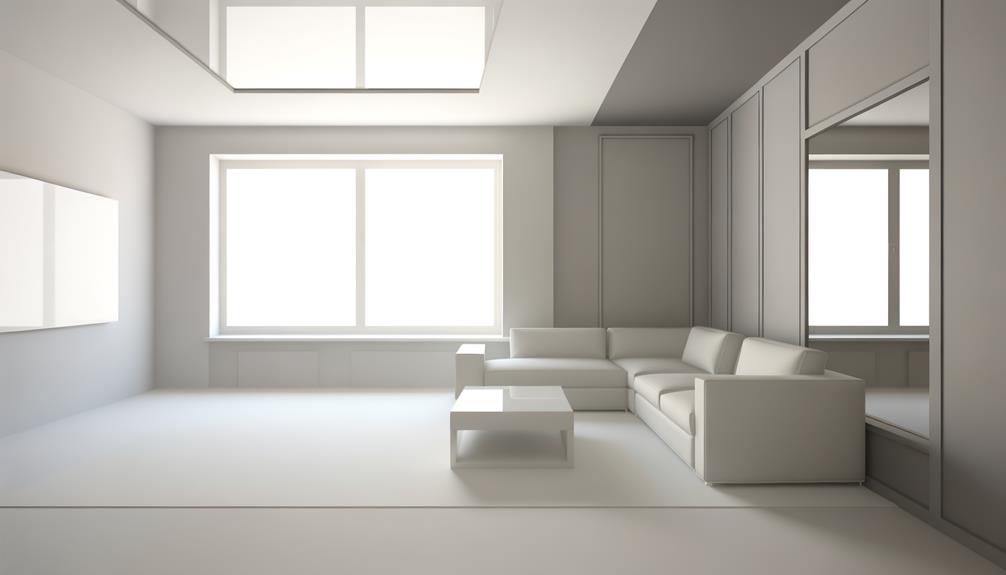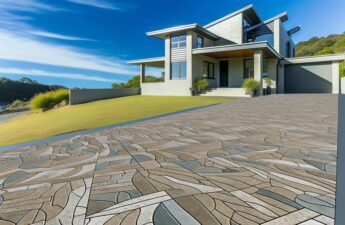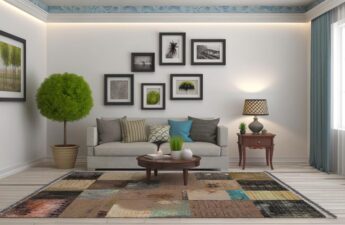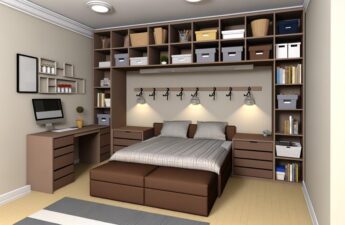Imagine walking into a home that feels as calming and serene as a tranquil lake at dawn. That's the essence of minimalist interior design. It's a style that embraces simplicity and understated elegance, creating a space that breathes and allows you to breathe.
But how do you achieve this minimalist look without sacrificing functionality or warmth? In this discussion, we will explore the key elements of minimalist interior design, discover some inspiring examples, and uncover tips to help you create your own minimalist oasis.
Get ready to transform your space into a haven of tranquility and style.
What Is Minimalist Design?

Minimalist design is a style characterized by simplicity and a focus on essential elements. When it comes to interior design, minimalist interiors are becoming increasingly popular. A minimalist interior is all about decluttering and creating a space that's clean, organized, and free from unnecessary distractions. It emphasizes the use of simple lines, neutral colors, and a limited number of furniture and decor items. The goal is to create a calm and serene environment that promotes relaxation and tranquility.
In minimalist design, less is more. It's about stripping away the excess and only keeping what's essential. This means getting rid of any unnecessary clutter, excessive ornamentation, and unnecessary furniture or decor pieces. Instead, the focus is on functionality and purpose. Every item in a minimalist interior serves a specific function and contributes to the overall aesthetic of the space.
Minimalist design also emphasizes the use of natural light and open spaces. Large windows, glass walls, and open floor plans are common features in minimalist interiors. These elements not only allow for an abundance of natural light to enter the space but also create a sense of spaciousness and freedom.
Key Elements of Minimalist Interior Design
When creating a minimalist interior design, it's important to focus on key elements that will contribute to the overall aesthetic of the space. One of the most crucial key elements is the use of a neutral color scheme. Minimalist design is known for its simplicity and clean lines, and a neutral color palette helps to achieve this look. Opt for colors such as white, beige, gray, or black to create a calm and serene atmosphere. These colors also help to enhance the natural light in a room, making it feel brighter and more spacious.
Another key element of minimalist interior design is the use of functional furniture. Choose pieces that are simple and have clean lines. Avoid overly ornate or decorative furniture that can clutter the space. Opt for furniture with hidden storage to help keep the room organized and free of unnecessary clutter.
In addition, minimalist design relies heavily on the concept of 'less is more.' This means that every item in the space should serve a purpose and have a specific function. Avoid unnecessary decorations or accessories that can detract from the overall simplicity of the design.
Examples of Minimalist Decor
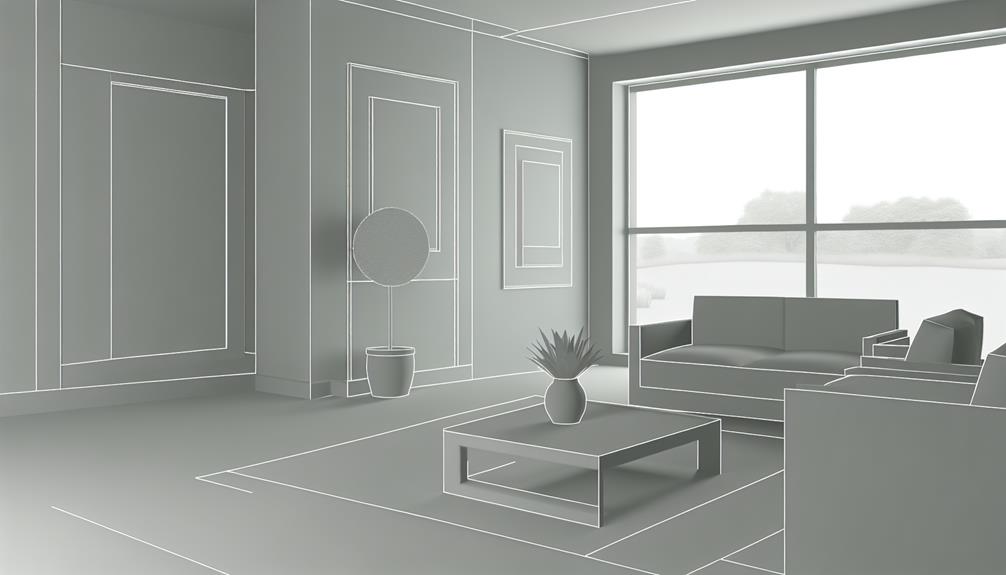
To achieve minimalist decor, focus on clean lines and simple shapes in furniture and decor. Minimalist design is all about simplicity and functionality. Instead of elaborate patterns and ornate details, opt for furniture and decor with clean, sleek lines. Choose pieces that have a minimalist aesthetic, such as a modern sofa with straight edges or a simple dining table with minimal embellishments.
Keep the color palette limited, often opting for monochromatic schemes with occasional accents. This helps create a cohesive and harmonious look. Remember to prioritize functionality and purpose in every item. Avoid clutter and unnecessary decoration. Keep the space uncluttered and minimal, with only essential items on display.
Minimalist decor aims to create a calming and serene atmosphere, so it's important to create a sense of openness and simplicity. Focus on quality over quantity and let the beauty of simplicity shine through in your minimalist design choices.
Tips for Achieving a Minimalist Look in Your Home
To achieve the minimalist look in your home, focus on decluttering and creating a sense of openness and simplicity. Start by getting rid of unnecessary items and keeping only the essentials. This will help create a clean and uncluttered space.
Choose neutral colors for your walls, furniture, and accessories. Neutral colors such as white, beige, and gray create a calm and serene atmosphere. They also allow other elements in the room to stand out. Avoid using too many bright or bold colors as they can disrupt the minimalist aesthetic.
Another tip is to maximize the use of space in your home. Keep furniture to a minimum and opt for sleek and simple designs. This will create a more open and spacious feel. Use storage solutions that are hidden or integrated into the design to minimize visual clutter. Clear surfaces and open spaces will enhance the minimalist aesthetic.
Lastly, pay attention to the quality and craftsmanship of the items you choose. Invest in well-made and durable pieces that will stand the test of time. This won't only contribute to the minimalist look but also reduce the need for frequent replacements.
Current Trends in Minimalist Interior Design
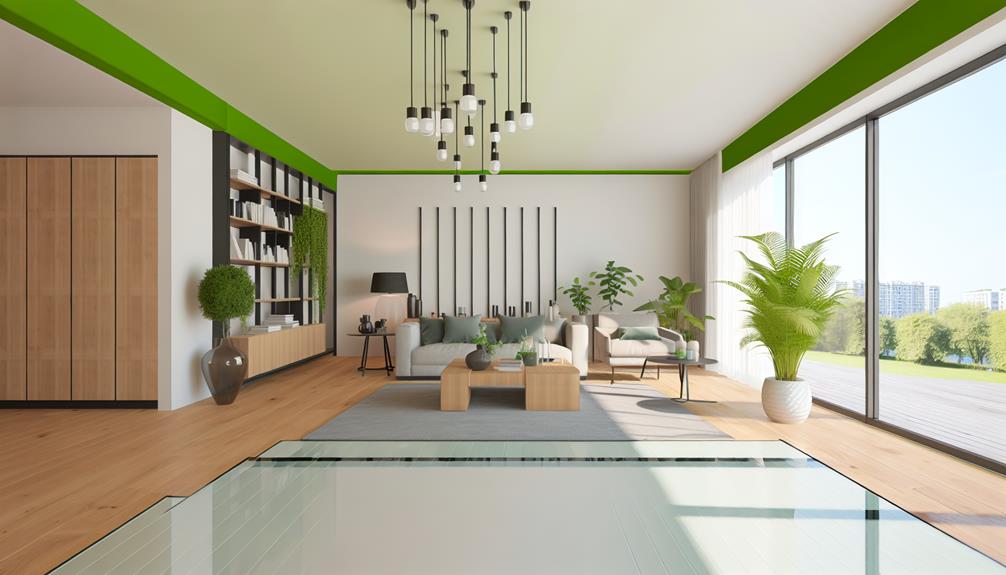
Currently, minimalist interior design trends are shifting towards incorporating more color into the layout, using grey as the new neutral, and emphasizing simplicity and clean lines.
In the past, minimalist design often relied on a monochromatic color palette, with shades of white, black, and gray dominating the space. However, there's now a growing trend towards adding pops of color to create visual interest and depth. This can be achieved through the use of vibrant accent pieces, such as pillows, rugs, or artwork.
Grey has also become a popular choice as the new neutral, replacing traditional white or beige. It provides a softer and more contemporary look, while still maintaining a minimalist aesthetic.
Furthermore, simplicity and clean lines are key aspects of current minimalist design. Furniture and decor are chosen with a focus on functionality and minimal ornamentation. Clutter is avoided, and every item in the space serves a purpose. This creates a sense of calm and order, allowing the design to truly shine.
